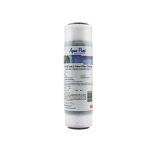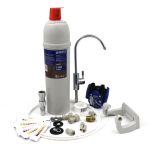
Many people in the community may wonder as to why chemical elements such as chlorine are introduced to our municipal drinking water. The aesthetically displeasing attributes that chlorine brings to the taste, odour, and overall enjoyment of your water are enough to make some avoid it completely. Governments, council electorates, and water boards around the world continue to utilise chlorine in their water treatment processes due to the fact that chlorine is simply the most economical and effective method of disinfecting a large water source across vast distances of pipe work.
Sydney’s network for example, consists of 21,000 kilometres of pipelines that link up to 152 pumping stations and 255 water service reservoirs. This infrastructure is all linked to the 13 water distribution systems used to service the city and surrounding suburbs. In this instance using other treatment methods such as UV or membrane technology would only create a safe drinking water at the point of disinfection and would not offer any protection to family homes and businesses located in the network.
When dosed correctly, chlorine effectively kills an extensive variety of Microbial pathogens that can include Cholera, Dysentery, and Typhoid. Chlorine is also one of the few disinfectants that can effectively eliminate microorganisms during the treatment process and maintain safe levels of disinfection all the way through a water network to your very own kitchen tap. Chlorine will neutralise these pathogens at a cellular level by introducing Hypochlorous Acid, which enters the cell wall in a concentrated form with water and breaks down enzymes within the cell wall, leaving them open to attack.
Many homeowners consuming treated drinking water will find that it is not unusual to notice the occurrence of an increase in chlorine taste and odour or experience skin irritations at one location being more prevalent than another location. The reason behind this is that chlorine can dissipate over time and distance. To counteract this, chlorine needs to be dosed in sufficient quantity to be effective. Your proximity to a water source or treatment facility may mean that you have to experience a higher dose of chlorine so that other homes further downstream of you are still safely and sufficiently dosed.
For the foreseeable future, chlorine will continue to be the leading method of disinfection within Australia. Modern carbon-based media filtration products do however offer a safe and cost-effective way to reduce the amount of chlorine in your water source by up to 99%. A reduction of this level would leave your water tasting crisp, clear, and chemical-free. This will also provide significant improvements to sufferers of Psoriasis, Eczema and other such skin conditions that can be irritated by the harshness of chemical disinfectants.
For more information on water quality or general water filter enquiries, please call our friendly sales team on 1300 724 249 or send us an email at [email protected].










